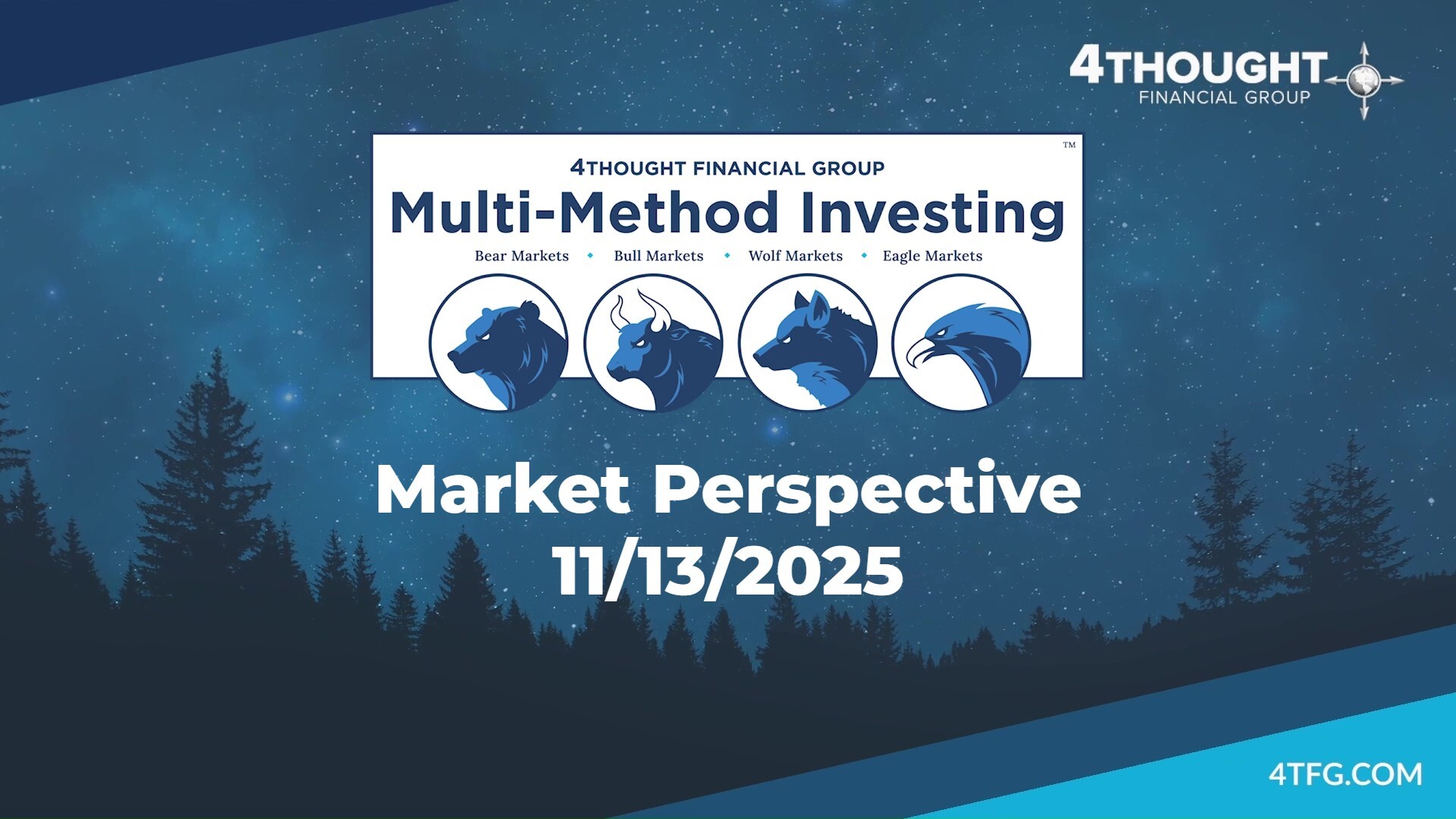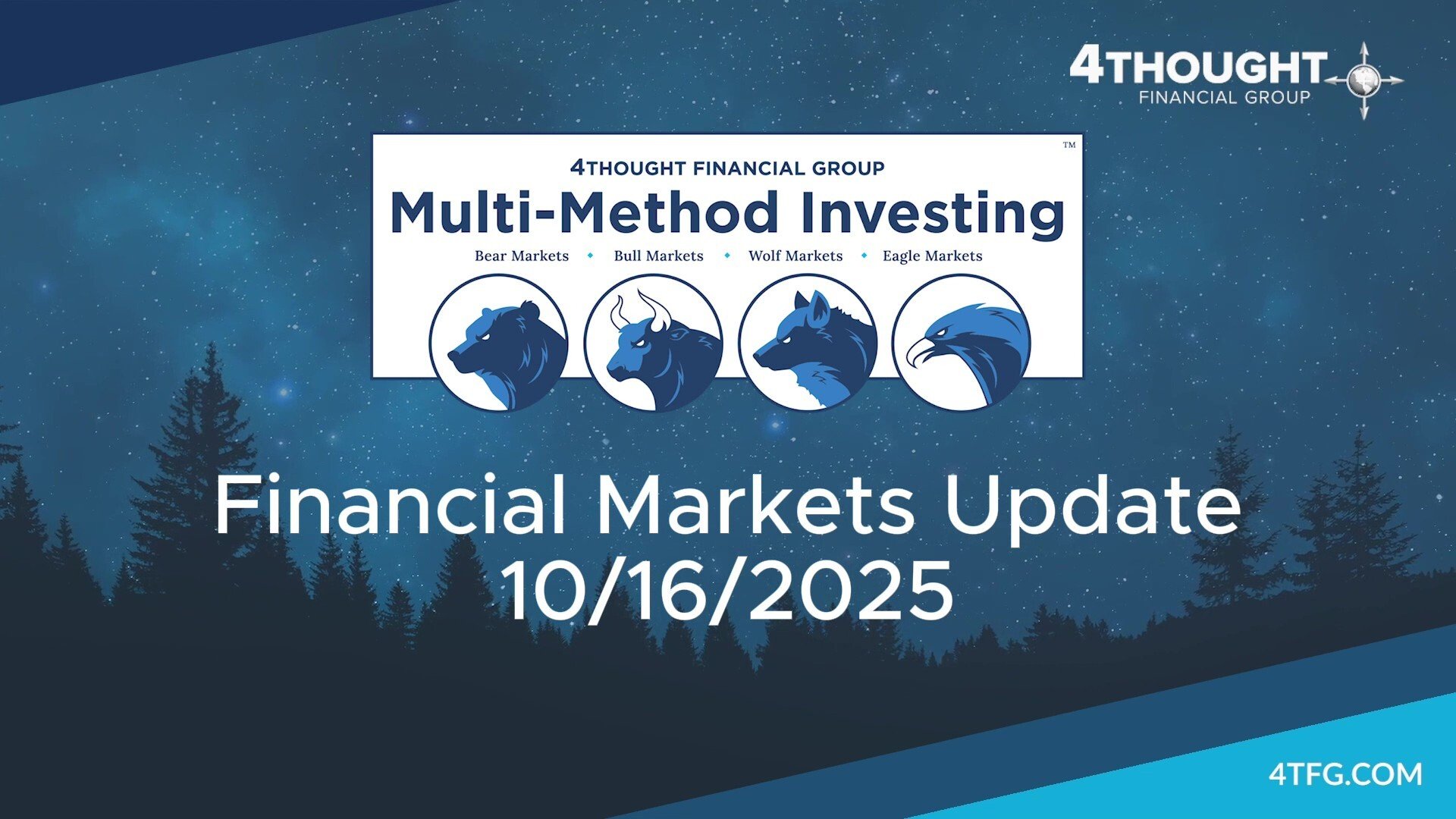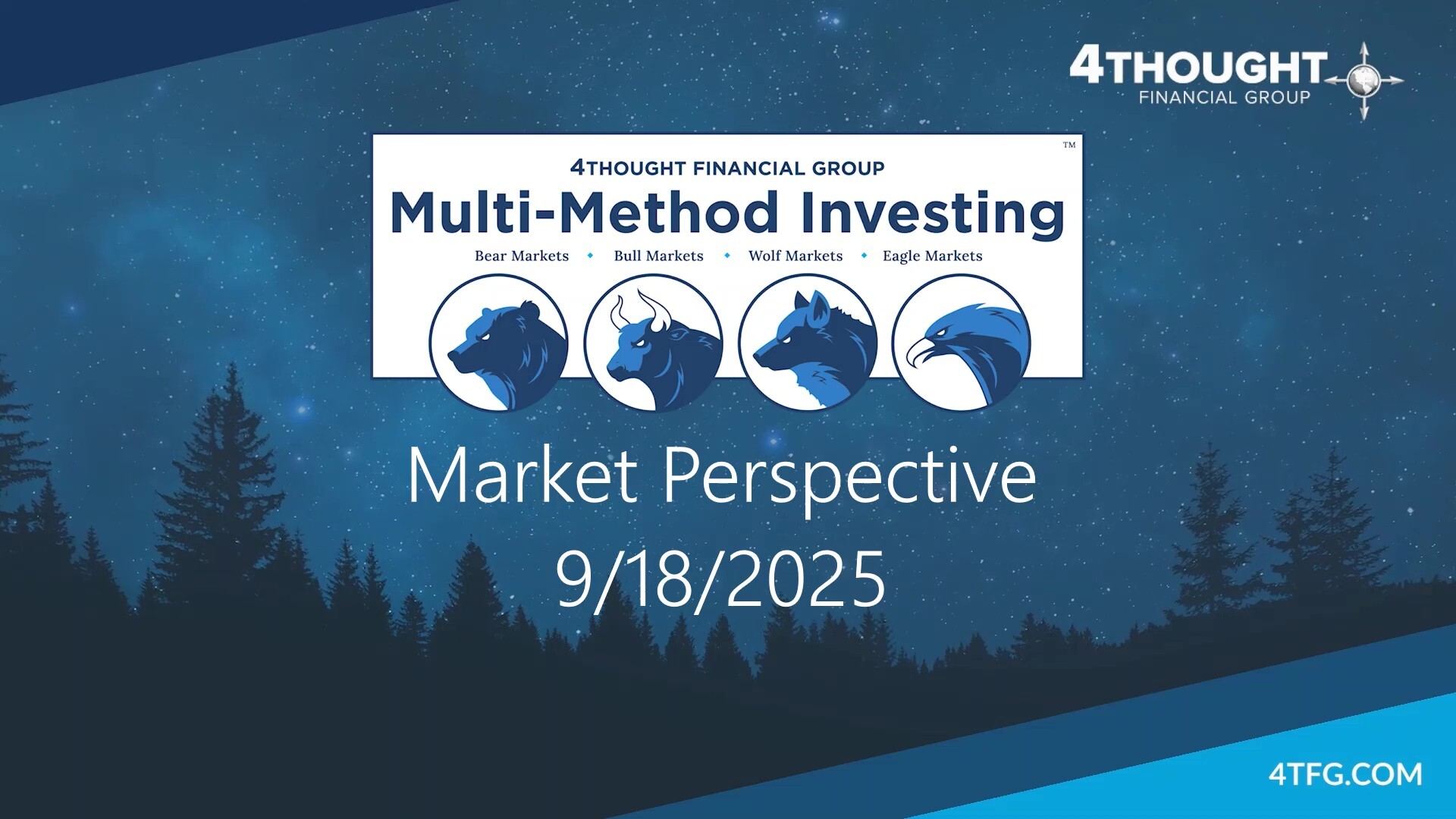4Thought provides you with actionable investment analysis and perspective on the financial markets.
Contact us to determine whether any ideas presented are applicable to your situation before taking any actions with regards to your financial plan or investment portfolio.
Hear from Chief Investment Officer Jesse Mackey in this week's Market Perspective.
VIDEO TRANSCRIPT:
I’m Jesse Mackey, CIO of 4Thought Financial Group, and this is 4Thought’s Market Perspective as of July 13th, 2021.
Stocks crept further into record territory during the last two weeks as measured by several broad market indices, and they continue to outperform bonds by a wide margin so far this year. The significant lead that US small cap stocks held over large cap and non-US stocks for most of the year has begun to narrow somewhat over the last several weeks. But across all asset types, US small caps are still by far the best performers year-to-date, while US aggregate bonds show the worst performance.
Historical data indicates that once a new Bull Market has been confirmed (which happened on August 18th of last year when the S&P 500 Index had recovered from its March 23rd, 2020 Bear Market low point and achieved a new record price), the shortest time period on record (since 1950) before the beginning of another Bear Market was only 6 days, and the longest time on record was approximately 7.44 years, with an average of 2.44 years. Approximately 10.97 months have elapsed from the point of Bull confirmation in this instance so far.
There has usually been at least one 10%+ correction (but often several) between most bear markets in history. The average time between the end of one correction (or bear market) and the start of another is a little over 1 year. The first correction in the current Bull Market was completed relatively early, about 9.73 months ago on September 24th. We like to refer to the combination of a correction and its corresponding recovery (which was registered on November 9th) as a Wolf Market.
Our data set also tells us that about 55% percent of Wolf Markets like the last one we experienced have been followed by a period that exhibits trailing 1-year returns of 30% or greater (something we refer to as an Eagle Market). The first Eagle Market subset of the current Bull Market was quantitatively confirmed on March 1st, and has continued since then. Since the November 9th Wolf Market endpoint when the previous record price was breached, the S&P 500 Index had packed on additional gains of about 20.26% as of the close of business on Monday. Once an Eagle Market like the current one has been indicated, it continues for an average of an additional 5.35 months (although they sometimes end as quickly as the same day they're confirmed). This instance has so far continued for 4.47 months. Eagles may be followed by any of the three other market types, included a flattening of growth rates to return to a standard Bull Market, or an immediate reversion into a Wolf or Bear market. But given that stocks are still relatively early in the traditional broader Bull/Bear market cycle (by historical standards), an immediate Bear market (although certainly possible) appears the least likely of the various scenarios.
Based on analysis of the complete historical market type data set using our Multi-Method Adaptive algorithmic process, we are now allowing overweight allocations to Opportunistic Investing, neutral allocations to Strategic Asset Allocation and Liability-Driven Investing, and underweights to Selective/Concentrated Investing.
From a probabilistic analysis perspective, valuations tell a story that's somewhat negative for stocks, and more favorable for the bond markets. On this basis, most stock types range from slightly overvalued to significantly overvalued. Bonds range from moderately undervalued (in the case of long term US Treasury bonds) to near fair value (in the case of most other bond types). Long term US Treasury bonds now reflect the most attractive pricing relative to the alternatives, while US small and mid cap stocks are the least attractive.
Against this backdrop the outlook for stocks is now neutral to slightly negative in the intermediate term based on the overall aggregate of our historical market-type data analysis and quantitative probabilistic analysis.
I hope this was helpful. If you have questions or you’d like to discuss what this means for your particular situation, please contact 4Thought at 516-300-1617 or at info@4tfg.com – and don’t forget to subscribe to our blog feed and our YouTube channel. Thanks for watching, and see you next week.






Leave a Comment